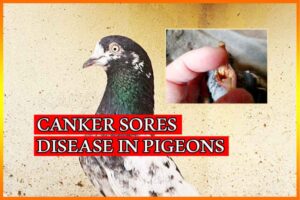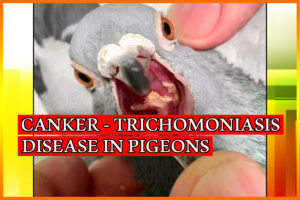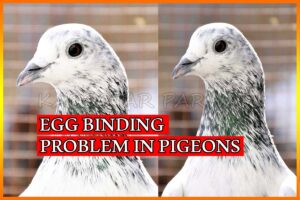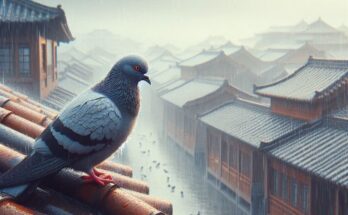Rescue Injured Baby Pigeon – In urban environments, it is not uncommon to come across injured baby pigeons. These helpless creatures often find themselves in dangerous situations, leaving them vulnerable to injury. However, with proper care and attention, we can help save these injured baby pigeons and provide them with a chance to heal and thrive.
Remember, always prioritize the bird’s safety and well-being, and seek professional assistance when necessary. Together, we can make a difference in the lives of injured baby pigeons and contribute to their survival in urban environments.
Before attempting to rescue an injured baby pigeon, it is crucial to gather the necessary supplies. These include:
- Arrange a small cardboard box or container
- Ensure it has adequate ventilation holes for ventilation
- Put some soft towels or cloths, thereupon protect yourself and the bird from potential harm
- Warm water
- Avian or pigeon feed
Examine The Injured Baby Pigeon
When you come across an injured baby pigeon, it is important to assess the situation carefully. Pay attention to any visible injuries, signs of distress, or indications of immediate danger. Approach the bird slowly and calmly to avoid causing further stress.
Observe the injured baby pigeon from a safe distance. Look for any visible injuries, such as broken wings, bleeding, or dislocated limbs. Assess its overall condition, including its ability to move or fly which is the most important.
Handling The Baby Pigeon
Approach the injured baby pigeon slowly and calmly. Speak softly to soothe the bird and gain its trust. Avoid making sudden movements that may startle or further distress the pigeon. Using gentle and slow movements, carefully capture the injured baby pigeon with your gloved hands.
Prepare The Box

Line a small cardboard box or container with soft towels or cloths. Ensure there are ventilation holes to allow for proper airflow. Gently place the injured baby pigeon in the prepared box, ensuring it is comfortable and secure. Avoid placing any heavy objects or materials that could cause harm. To maintain the pigeon’s body temperature, place a heating pad or warm water bottle wrapped in a towel at one end of the box. Yet this will provide a warm and cozy environment for the bird.
How To Feed Injured Baby Pigeon
Feeding an injured baby pigeon requires specific knowledge and attention, as their dietary needs differ from adult pigeons. Proper nutrition plays a crucial role in the recovery and growth. It is essential to have a well-rounded understanding of what foods are suitable for these little creatures.
In the meantime monitor the baby pigeon’s weight, overall health, and droppings. Any sudden changes may indicate a need for adjustment in its diet or immediate veterinary attention.
Baby pigeons require frequent feeding to meet their nutritional needs. Feed them every 2 to 3 hours during the day, gradually reducing the frequency as they grow older.
- Hold the baby pigeon securely but softly
- Gently open its beak with your finger
- Use a syringe or dropper to slowly administer the feeding formula into its mouth
- Allow the baby pigeon to swallow before giving more food.
- Once the baby pigeon is self, introduce finely chopped fruits, vegetables, and grains into its diet, ensuring they are easily digestible.
- Alongside feeding, it is crucial to ensure the baby pigeon stays hydrated. Offer it clean water in a shallow dish or a small saucer.
- Moreover, add a pinch of electrolyte powder to the water for added hydration and to replenish essential minerals.
The Droppings of Baby Pigeons
Analyzing the droppings of injured baby pigeons can provide valuable information about their health, diet, and overall well-being. Droppings can reveal essential clues about the bird’s digestive system, hydration levels, and potential illness.
Firstly, it allows us to assess the bird’s hydration levels. Dehydrated pigeons may have dry, crumbly droppings, indicating a lack of sufficient water intake. Secondly, the color and consistency of droppings can indicate potential health problems such as infections or dietary issues.
Ideally, the droppings should be firm but not excessively hard, indicating a healthy digestive system. Loose or watery droppings may suggest an imbalance in the bird’s diet or the presence of an infection.
The color of the droppings can indicate the baby pigeon’s diet and overall health. Darker droppings may suggest a high intake of seeds, while lighter ones could indicate a more varied diet. Watery or discolored droppings could be indicative of an underlying health issue. For instance, greenish droppings may indicate liver problems, while red or black droppings may suggest internal bleeding.
Summary
In conclusion, closely monitoring the droppings of an injured baby pigeon is an essential aspect of their care. By observing consistency, color, and frequency, we can gain valuable insights into the bird’s digestive health and overall well-being.
Regular examination of droppings allows us to detect any potential issues early on and take appropriate action to ensure the pigeon’s recovery.
- Canker Sore Treatment in Pigeons
- Coccidiosis In Pigeons – How To Treat Cocci Disease
- Diarrhea in Pigeons Big Problem for Fanciers
- How to Check Pigeon Health in 5 Minutes ?
- How To Treat Canker in Pigeons
- How to Treat Egg Binding Problem in Pigeons ?
- Pigeons Paramyxovirus Virus – How to Prevent Pigeons
- Protection From Most Common Pigeon Diseases Learn Now










